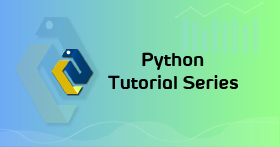Machine Learning Tutorial: From Beginner to Pro – Master Machine Learning
Unlock the power of Machine Learning with our FREE tutorials, practicals, case studies, interview questions and real-time projects!
Learn the fundamentals and start creating your own ML models in just a few weeks. From beginner to pro, our step-by-step guide will take you on a journey to mastering Machine Learning. Don’t wait, start learning Machine Learning for free today.
What is Machine Learning?
Machine Learning is the scientific study of algorithms that involves usage of statistical models that computers utilize to carry out specific tasks without any explicit instruction. It relies on patterns and other forms of inferences derived from the data. Machine Learning algorithms are built on top of a mathematical model that makes use of a sample data known as “training data” for making decisions without any explicit programming.

Getting Started with Machine Learning
Explore the Machine Learning Tutorial Series and learn ML from Scratch
Machine Learning Tutorial
- Machine Learning Tutorial
- Machine Learning Basics
- Machine Learning Software
- Machine Learning Use Cases
- Machine Learning Applications
- Why is Machine Learning so popular?
- Machine Learning Algorithms
- Machine Learning Classification
- Machine Learning Tools
- Best Way to Learn Machine Learning
- Future of Machine Learning
- Advantages and Disadvantages of Machine Learning
Machine Learning Advanced Concepts
- Machine Learning Algorithms
- Clustering in Data Mining
- Artificial Neural Networks for Machine Learning
- Convolutional Neural Networks tutorial
- Recurrent Neural Networks
- Artificial Neural Network Applications
- Artificial Neural Network Model
- Neural Network Algorithms
- Machine Learning in Education
- Machine Learning in Healthcare
- Machine Learning in Finance
- Machine Learning for Entrepreneurs
- Dimensionality Reduction
- Java for Machine Learning
- Clustering in Machine Learning
- Gaussian Mixture Model
- How Google uses Machine Learning?
- Machine Learning Case Studies
- Machine Learning Infographic
Machine Learning using Python
- Python Machine Learning Tutorial
- Python Machine Learning Environment Setup
- Python Machine Learning – Data Preprocessing
- Training Data and Test Data- ML
- Python Machine Learning Techniques
- Python Machine Learning Algorithms
- Applications of Machine Learning
- Machine Learning Algorithms in Python
- Deep Learning With Python Tutorial
- Applications of Deep Learning with Python
- Python Deep Learning Environment Setup
- Deep Learning With Python Libraries
- Deep Neural Networks With Python
- Computational Graphs in Deep Learning With Python
Deep Learning
- Learning Rules in Neural Network
- Deep Learning Tutorial
- Deep Learning Terminologies
- Audio Analysis Using Deep Learning
- Support Vector Machines Tutorial
- Applications of SVM
- SVM Kernel Functions
- Gradient Boosting Algorithm
- XGBoost Tutorial
- XGBoost Algorithm
- AdaBoost Algorithm
- Deep Learning vs Machine Learning
- Data Science vs Artificial Intelligence vs Machine Learning vs Deep Learning
- Deep Learning Project Ideas
Machine Learning Project
- Computer Vision Project Ideas
- Machine Learning Datasets & Project Ideas
- Top 310+ Machine Learning Projects for 2023 [Source Code Included]
- ML Project – Image Segmentation
- ML Project – Handwritten Character Recognition with Neural Network
- ML Project – Brain Tumor Classification
- ML Project – Custom Object Detection with YOLO V5
- ML Project – Language Translation
- ML Project – Text Summarization
- ML Project – Real-Time Object Detection using TensorFlow
- ML Project – Iris Flower Classification
- ML Project – YouTube Video Recommendation System
- ML Project – Abandoned Object Detection
- ML Project – Earthquake Prediction
- ML Project – Book Recommendation System
- Deep Learning Project – Handwritten Digit Recognition
- Deep Surveillance with Deep Learning – Intelligent Video Surveillance
- Emojify – Create your own emoji with Deep Learning
Machine Learning Project using Python
- Pneumonia Detection using CNN
- Driver Drowsiness Detection System with OpenCV & Keras
- Cartoonify an Image with OpenCV in Python
- Detecting Fake News
- Speech Emotion Recognition with librosa
- Detecting Parkinson’s Disease with XGBoost
- Breast Cancer Classification
- Gender and Age Detection with OpenCV
- Sudoku Solver using OpenCV
- Remove Background of Images
- Pan Card Fraud Detection using Python & OpenCV
- Object Tracking with Camshift using OpenCV
- Face Recognition with Python
- Sentiment Analysis in Python using Machine Learning
- Credit Card Fraud Detection with Python & Machine Learning
- Harry Potter’s Invisible Cloak using OpenCV
- Real-time Pedestrian Detection using Python & OpenCV
- Road Lane line detection using OpenCV
- Real-Time Face Mask Detector with Python, OpenCV, Keras
- Auto-capture Selfie by Detecting Smile
- Sign Language Recognition Using Python and OpenCV
- Stock Price Prediction – Machine Learning Project in Python
- Music Genre Classification
- Python Chatbot Project using NLTK & Keras
- Colour Detection using Pandas & OpenCV
Machine Learning Tutorial
Machine learning: a word that we’ve exploited so much in the recent times, that people have forgotten that the primary definition of this complex technology is that it is the branch of AI, that identifies its base on the concept that machines and systems are able to analyze and understand data, and are even able to learn from it and make decisions with minimal to eliminating the need for human intervention. Most industries and businesses that currently work with massive amounts of data identified and recognized the value of machine learning technologies.
By harvesting insights from this data, businesses can work more efficiently and are able to garner an advantage over others. Our Machine Learning tutorial will try to curate a simple course on Machine Learning for you to understand what exactly people imply by the term machine learning, the way in which it works, and its history along with its usage in our day-to-day lives. So, let us begin by knowing what Machine Learning actually is at its core.
Arthur Samuel first coined the term Machine Learning in the year 1959. Tech giants and experts in technology consider him to be a pioneer in Artificial Intelligence and computer gaming, and he defined Machine Learning tutorial as a “Field of study that gives computers the capability to learn without being explicitly programmed”.
To understand this statement in much simpler terms, we can conclude that Machine Learning tends to be an application of Artificial Intelligence (AI) which facilitates a program (software) to be able to learn from the experiences and enhance itself at the given solution without being explicitly programmed.
Differentiating Machine Learning from Conventional Programming
Do you also scratch your head in confusion and wonder how is Machine Learning different from traditional and conventional programming methods? The answer to this is quite simple since in traditional programming, we were supposed to feed the input data and as well as a well written along with a tested program into a machine to generate the desired output. When we divert our conversation to machine learning, we feed the input data that we’ve to feed to the machine along with the desired output associated with the data into the machine during the learning phase itself, and it tends to work out a program for itself.
Do not hesitate if you are unable to understand this difference completely, since in the coming sections we will try to get a better understanding of these statements.
History of Machine Learning
With the recent growth that we’ve seen in the technological trends, we are able to observe some astonishing applications of Machine Learning such as we can see in self-driving cars, Natural Language Processing, and many others like them. However, Machine learning had its root in the technological world for over 70 years now. It all began in 1943 when neurophysiologist Warren McCulloch and mathematician Walter Pitts came up with a paper about neurons and the fundamentals of their workings. They were decisive to fabricate a model of this with the help of an electrical circuit, and therefore, the neural network came into existence.
In 1950, Alan Turing designed the “Turing Test” to test if we can embed a computer with real intelligence. In order to pass the test, the algorithm demands the computer to fool a human into believing it is also human. In 1952, Arthur Samuel came up with the first computer learning program. The program was the game of checkers, and the IBM computer-enhanced at the game the more it played, observing which moves made up winning strategies and incorporating the winning moves into its program.
Just after a few years, in 1957, Frank Rosenblatt came up with the first neural network for computers (the perceptron), which was able to simulate the thought processes of the human brain. Later, in the year 1967, the “nearest neighbor” algorithm came to light, which empowered the computers to start the usage of very basic pattern recognition. We consequently began to map a route for traveling salesmen, starting at a random city but ensuring they visit all cities along with maintaining a short tour.
However, we are able to say that in the 1990s we witnessed a big change. At those times, work on machine learning shifted from a knowledge-driven approach to a data-driven methodology. Scientists commenced innovating programs for computers to empower them to analyze large amounts of data and draw conclusions or “learn” from the results.
Features of Machine Learning
- Automation: With the recent technological advancements in your Gmail account, there exists a spam folder that stores and maintains the record of all the spam emails. You might be wondering in what ways does Gmail come to know that all these emails are spam? This is just a peculiar boon of Machine Learning. It tries to recognize the spam emails and thus, it is quite straightforward to automate this process. The ability to automate iterative tasks is one of the biggest characteristics of machine learning.
- Improved customer experience: For any business that we run today, one of the most significant ways to drive engagement, endorse brand loyalty and ascertain long-lasting customer relationships is by facilitating a customized experience and stipulating better services. Machine Learning assists us to achieve both of them. Have you ever observed that whenever you scroll through any of the shopping sites or see any ads on the internet, they are mostly related to something that you have recently searched for? This is because machine learning empowers the predicting algorithm to make amazing recommendation systems that are accurate.
- Automated data visualization: In conventional times, we have witnessed a huge amount of data being generated by companies and individuals. Considering the example of tech giants like Google, Twitter, and Facebook, we could only imagine how much data they are generating per day? We are able to make use of this data and visualize the notable relationships, consequently giving businesses the ability to make better decisions that can actually advance both companies as well as customers.
- Business intelligence: Machine learning characteristics, when merged with the advancements of big data analytics are able to help companies to find solutions to the problems that consequently are able to assist the businesses to grow and engender more profit.
Machine Learning in Python
Python facilitates flexibility in the given choice between object-oriented programming or scripting. There even exists no need to recompile the code; developers are able to implement any changes and instantly observe the results. You are able to make use of Python along with other languages in order to accomplish the desired functionality and results.
Python accounts to be a versatile programming language and are able to run on any operating platform including Windows, macOS, Linux, Unix, and others. While drifting from one platform to another, the code demands some minor adaptations and changes according to the environment and semantics of the language, and it then becomes ready to work on the new platform.
There exist different packages for various types of applications, as we can conclude from below:
- Numpy, OpenCV, and Scikit for handling and working with images
- NLTK along with Numpy and Scikit for working with text
- Librosa helps in processing audio applications
- Matplotlib, Seaborn, and Scikit proves to be a boon in data representation
- TensorFlow and Pytorch facilitate elaborate libraries for Deep Learning applications
- Scipy proves to be handy for Scientific Computing
- Django is beneficial in integrating web applications
- Pandas are a savior when it comes to high-level data structures and analysis
Types of Machine Learning

Comparison of Present and Future of Machine Learning
Google’s X Lab innovated a machine learning algorithm that is efficient enough for autonomously browsing YouTube videos in an attempt to recognize the videos that contain cats. In 2016 AlphaGo managed to win four out of five matches against Lee Sedol, who was then the world’s top Go player for over a decade.
Taking the technological game, a little further now in 2020, OpenAI released GPT-3 which emerges as the most powerful language model ever. It is able to write creative fiction, fabricate functioning code, compose elaborate business memos, and much more. Its possible use cases find a limitation in only our imaginations.
Machine Learning can prove to be a competitive advantage to any company willing to deploy it, be it a top MNC or a startup. As things that are currently being done manually and thus have a high scope of inaccuracy will be done tomorrow by machines. With the insertion of projects such as self-driving cars, and Sophia (a humanoid robot) we have already initiated a glimpse of what the future is capable of being.
Summary
Our Machine Learning tutorial offers an excellent opportunity for those looking to improve their knowledge in the field and advance their careers.
With a step-by-step guide, expert instructors, and real-world projects, you’ll gain the knowledge and hands-on experience you need to become proficient in Machine Learning.
The machine learning tutorial is designed to be accessible to people of all skill levels. You will also have access to a wealth of resources and support, including interactive quizzes, coding exercises, real-time projects, and interview questions & answers. Don’t miss out on this opportunity to learn Machine Learning for free and take your career to the next level.
Idea of Machine Learning
Let’s take a look at some facts about Machine Learning and its philosophies.
In 1959, computer gaming and AI pioneer Arthur Samuel coined the term at IBM. This is a field of computer science that makes use of statistical techniques to give computer systems the ability to learn without being explicitly programmed. This comes through a quest for artificial intelligence- as they say, necessity is the mother of invention. Many researchers like to claim this is the best way to progress toward human-level AI. With machine learning, we build algorithms with the ability to receive input data and use statistical analysis to predict output while updating output as newer data become available.
We often make use of techniques like supervised, semi-supervised, unsupervised, and reinforcement learning to give machines the ability to learn.

Arthur Lee Samuel
Conclusion
With this, we can conclude our tutorial on Machine Learning. This short blog is an attempt of providing beginners with a glimpse of Machine Learning and its various advantages. We even came across the various advancements of Machine Learning to date and how they have a greater significance as compared with the conventional methods used before Machine Learning. Hope this tutorial helped you gain the useful insight that you needed for Machine Learning and also gave you the significance of deploying Machine Learning algorithms for technical developments.




